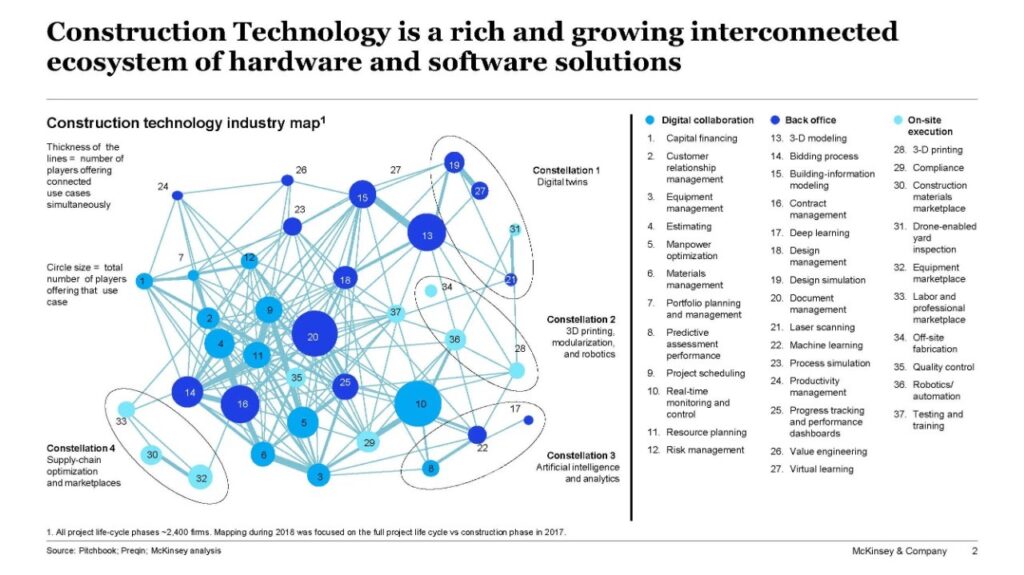ARTIFICIAL INTELLIGENCE
ARTIFICIAL INTELLIGENCE
Artificial Intelligence (AI) is performed by machines in replication of human cognitive functions primarily dealing with pattern recognition problem-solving, and learning. Machine learning is the field of AI that uses statistical techniques to give computer systems the ability to “learn” from any data that is introduced without being explicitly programmed to do so. The machine becomes better and better at understanding, interpreting the data and providing insights from it as it is exposed to more and more data.
AI can be used to create better buildings or cities through generative design.
Building Information Modelling (BIM) is a 3D model-based process that gives architecture, engineering, and construction professionals insights to efficiently plan, design, construct and manage buildings and infrastructure. BIM is a data repository for the built environment. It records information about everything that goes into a building’s design: the materials, the architectural, structural, electrical, and mechanical elements, and objects. BIM is the natural precursor to AI, which excels at taking data like this and interpreting it.
In order to plan and design the construction of a project, the 3D BIM models need to take into consideration the architecture, engineering, mechanical, electrical, and plumbing (MEP) plans and the sequence of activities of the respective teams the AEC industry uses machine learning in the form of AI-powered generative design to identify and mitigate clashes between the different models generated by the different teams to prevent rework. This uses machine learning algorithms to explore all the variations of a solution and generates design alternatives. Once a user sets up requirements in the model, the generative design software creates 3D models optimized for the constraints, learning from each iteration until it comes up with the ideal solution.
The data of the model created during the design phase can be directly transferred to the construction phase and for example can be utilised at off-site factories staffed by autonomous robots that piece together components of a building, which are then delivered and assembled by workers on-site. Structures like walls can be completed assembly-line style by autonomous machinery more efficiently than their human counterparts, leaving human workers to finish the detail work like plumbing, HVAC, and electrical systems when the structure is fitted together.
At a time when a massive amount of data is being created every day, AI systems are exposed to an endless amount of data to learn from and improve every day. Every job site becomes a potential data source for AI. Data generated from images captured from mobile devices, drone videos, security sensors, building information modelling (BIM), and others have become a pool of information. This presents an opportunity for construction industry professionals and customers to analyse and benefit from the insights generated from the data with the help of AI and machine learning systems.
Building owners and Facility Managers can use AI long after construction is complete. By collecting information through sensors, drones, and other wireless technologies, advanced analytics and AI-powered algorithms gain valuable insights about the operation and performance of a building, bridges, roads, and almost all elements in the built environment that go together to create cities. This means AI can be used to monitor developing problems, determine when preventative maintenance needs to be made, or even direct human behaviour for optimal security and safety. This AI modelling can then be advanced and utilised into creating, generating, simulation and scenario optimisation for better planning, expansions, and improvements to our smart cities of the future.
Artificial Intelligence, Digital Twinning, Machine Learning, and Augmented Reality, and many more advanced technologies can all play a part in delivering much more efficient buildings, infrastructure, services and evidenced based futureproofing for a more sustainable future for us all.
They are powerful new analytical technologies that enhance our ability to design and manage the built environment in ways that meet both human and planetary needs and can assist us in achieving our Net Zero Carbon goals.

